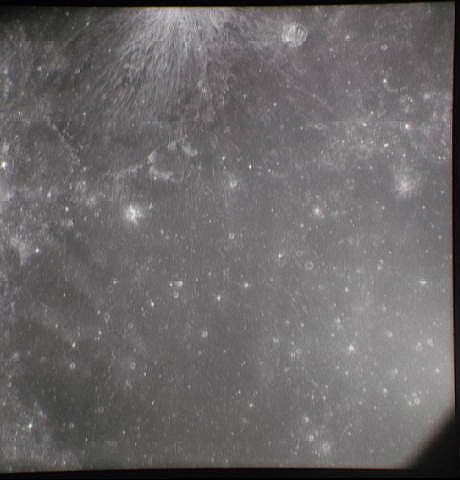AS10-28-4150
From The Space Library
Smyth's Sea
Mission: Apollo 10
Magazine: O
Frame Number: AS10-28-4150
Lens (mm): 80
| Lunar Longitude | 89.6 E |
| Lunar Latitude | 0.1 N |
| Sun Angle | |
| High | X |
| Medium | |
| Low | |
| Camera Angle | |
| Vertical | X |
| Oblique |
Photo Quality: Good .
Other comments: 1:1 245 000; near-vertical pass

